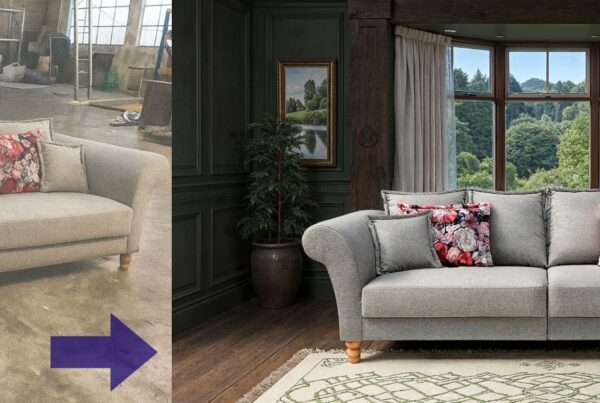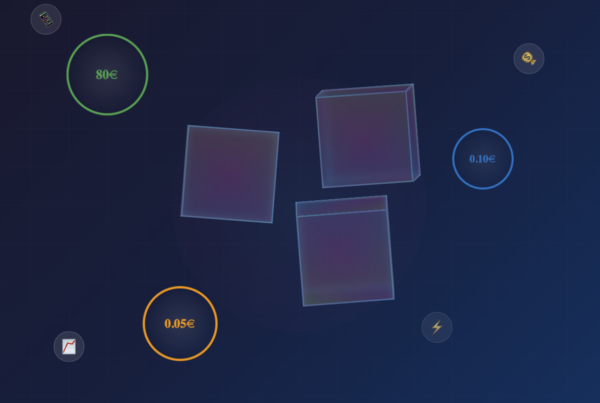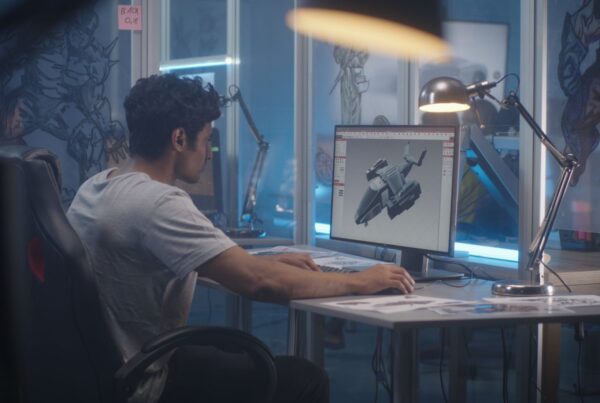Web-based augmented reality is booming! But what is the best web AR platform? To answer this question, different aspects should be taken into account, such as which functions are available and which ones you want to use exactly. Here is an overview of the top 7 AR platforms, tools and sdks in 2023 specifically for eCommerce.
Listing: Best Web AR platform
1. Mazing
Mazing is a user-friendly web AR platform for creating augmented reality for e-commerce. With Mazing, online retailers can easily add 3D product models and interactive AR features to their websites without the need for technical expertise or extensive development resources. By using mazing, customers can view products in a realistic and interactive way so that they can visualise how the products would look in their home before they buy. Mazing is not only a great solution for e-commerce companies, but also a useful tool for marketing agencies, industrial companies and freelancers who want to complement their marketing campaigns or product demos with augmented reality.
The core features include Web AR floor and wall tracking, virtual try-on for shoes and glasses and simplified 3D model creation with templates. The web AR platform is very easy to use, inexpensive and allows content to be easily integrated into websites. Mazing is not an SDK, so the platform offers less flexibility.
Features / Services:
- 3D model creation
- Web AR eCommerce
- Virtual try-on for shoes, jewellery and glasses
2. 8th Wall
8th Wall is a popular platform for creating web-based augmented reality experiences. Key features include cross-platform compatibility, extensive tracking functions and support for marker-based and markerless AR experiences. The benefits of 8th Wall include flexibility, support for multiple web browsers and the ability to quickly develop and deploy AR experiences. The disadvantages include the price structure, which can be expensive for larger companies, and the limited customisation options.
3. Zappar
Zappar offers an easy-to-use drag-and-drop interface for creating AR experiences. The core functions include support for image tracking, face tracking and location-based AR experiences. The advantages of Zappar include its affordable price, flexible licensing options and robust developer community. The disadvantages include the limited 3D modelling functions and the lack of support for advanced AR functions such as real-time occlusion.
4. ViewAR
ViewAR is a powerful platform for creating web-based AR and VR experiences that offers a wide range of customisation options. Key features include support for marker-based and markerless AR, a drag-and-drop interface and the ability to integrate with existing e-commerce platforms. Key features include support for marker-based and markerless AR, a drag-and-drop interface and the ability to integrate with existing e-commerce platforms.
5. Unity
Unity is a popular game development platform that also offers support for creating web-based AR experiences. Core features include a powerful 3D engine, extensive developer tools and multi-platform support. The benefits of Unity include flexibility and customisation options, a large developer community and support for advanced AR features such as real-time occlusion. Unity is designed for app-based applications, but is not yet very mature for the web.
6. Wikitude
Wikitude is a versatile AR platform that provides support for web-based and mobile AR experiences. The most important functions include support for image and object recognition, location-based AR and integration with API. The most important functions include support for image and object recognition, location-based AR and integration with API.
7. Vuforia
Vuforia is another AR platform that offers a wide range of features for creating web-based and mobile AR experiences, mainly for industrial applications. The core functions include support for image recognition, 3D object recognition and marker-based AR experiences. The advantages of Vuforia include its extensive range of functions, user-friendly interface and multi-platform support.
Advantages of web AR platforms
- Increase conversion rate and sales: By using Web AR, website visitors get a better idea of the product and gain more confidence to buy. This in turn leads to more purchases and higher sales figures.
- Minimize return rates: If you can virtually place the product before you buy it, there is no doubt that it will not fit. This minimizes return rates by up to 50%. This results in lower transportation costs for companies and less CO2 emissions in the environment.
- Strengthen customer satisfaction and loyalty: Offering Web AR provides an additional customer benefit and touchpoint in the customer journey. This leads to an exclusive customer experience and strengthens customer trust, satisfaction and loyalty.
Summary: Best Web AR platform
So what is the best augmented reality platform? This is very difficult to answer in general terms, as each platform has its advantages and disadvantages. For simple web AR applications for eCommerce, we recommend an inexpensive and uncomplicated platform such as Mazing. For complex applications and existing programming knowledge, for example for industrial products, you should use platforms such as Vuforia. Most platforms offer a free trial period so that you can easily choose your favourite.





